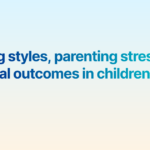Navigating the educational system and ensuring your child with autism receives the appropriate support can be a challenging journey. Our comprehensive guide on ‘How to Advocate for Your Child with Autism’ helps you tackle this task with confidence and knowledge. This article empowers parents to be strong advocates, provides a roadmap to navigate through the complex system, and offers strategies to ensure your child’s unique needs are met. Whether you’re new to the world of autism or a seasoned veteran, this guide is essential reading to understand and champion your child’s rights in the educational system and beyond.
“Understanding the Basics of Autism: A Comprehensive Guide for Parents”
![]()
“Understanding the Basics of Autism: A Comprehensive Guide for Parents” is an essential starting point in advocating for your child. Autism, also known as Autism Spectrum Disorder (ASD), is a complex neurological disorder that affects social interaction, communication, interests, and behavior. It’s crucial to grasp that every child with autism is unique, exhibiting different strengths and challenges. This understanding will help you identify your child’s needs and develop an effective advocacy strategy. With knowledge of autism basics, you can better communicate with educators, doctors, therapists, and other professionals who play a significant role in your child’s development journey.
“Effective Ways to Advocate for Your Autistic Child’s Rights”

Ensuring the rights of your autistic child are upheld can often feel challenging. Nonetheless, there are several effective methods that can help you advocate for your child’s needs. Firstly, gain comprehensive knowledge about autism and your child’s specific needs. Having a thorough understanding will better equip you to communicate their needs to others, such as teachers or medical professionals. Furthermore, familiarize yourself with the laws and regulations related to autism, especially those concerning education and healthcare. Finally, build connections with other parents, educators, and therapists who can provide valuable advice and support. Remember, advocating for your child’s rights is a proactive process, always stay informed and connected.
“Navigating Through Education: Ensuring Your Autistic Child’s Learning Needs are Met”

Navigating through the education system is critical when advocating for your child with autism. It’s essential to ensure their unique learning needs are met. You can do this by actively participating in their Individualized Education Program (IEP), understanding your child’s rights under the Individuals with Disabilities Education Act (IDEA), and building a strong relationship with their educators. Another key aspect is to continuously monitor their academic progress and make adjustments as necessary. These steps will help optimize your autistic child’s learning experience and foster their growth and development. Remember, advocating for your child’s education is a journey, not a destination.
“Building a Supportive Environment: A Step-by-Step Guide for Parents of Autistic Children”

Creating a supportive environment is a crucial step for parents advocating for their autistic child. This process entails understanding your child’s unique needs and adapting your home and lifestyle to promote their development and wellbeing. Start by learning about autism and the different strategies used in managing it. Then, involve your child’s therapists, teachers, and other caregivers in creating a cohesive approach to their care. Implementing an autism-friendly routine at home, promoting social interaction, and using visual aids can greatly assist. Remember, each child is unique, so what works for one may not work for another. Regularly updating your strategies based on your child’s progress is key.
“The Role of Therapy in Autism: Advocating for Your Child’s Mental and Emotional Health”

Therapy plays a crucial role in managing Autism, serving as a powerful tool to enhance your child’s mental and emotional health. As a parent, advocating for therapeutic intervention can significantly improve your child’s quality of life. Whether it’s cognitive-behavioral therapy, occupational therapy, or speech therapy, each can help manage autism-related challenges. By promoting these interventions, you can help your child develop essential skills for daily living, communication, and social interactions. Remember, early and consistent therapy can lead to better outcomes. It’s all about understanding your child’s unique needs and finding the right therapy that aligns with those needs.




